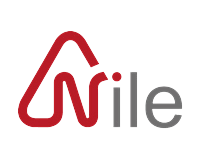
The powder coating process occurs at 500 F. The material to be coated needs to withstand this temperature for the duration of the coating process. Items such as gasketing and lubricants must be removed prior to coating. Also any enclosed spaces inside the part must be vented to the atmosphere to prevent over-pressurization damage during the heating process. Surfaces subject to weakly bonded oxide layers such as copper or brass typically do not work well. Metals such as carbon steel, stainless steel, aluminum and titanium have all be successfully coated.
All surface contaminants need to be removed in order to allow the primer to bond to the metal surface. We recommend a white metal blast as defined by the standard NACE No.1/SSPC-SP 5 White Metal Blast Cleaning. In addition to removing all surface contamination, this blasting also provides an aggressive anchor profile which increases the surface area and improves the bonding strength of the primer.
These are two different coating systems designed for two different applications. Architectural coating systems based on Kynar® PVDF are applied as a liquid spray and are optimized for long-term UV exposure and provide excellent color retention over long periods of time in outdoor exposure.
The Kryptonar™ PVDF powder coating system is designed for industrial applications where coatings are exposed to elevated temperatures and aggressive chemicals. Our industrial powder coatings are applied using an electrostatic powder gun or with a fluidized bed onto a pre-heated metal surface. Subsequent coating cycles can build thickness in excess of 100 mils (2.5mm).
Sometimes a metal part or a portion of the part has areas that are thinner and do not retain heat. You can overcome this by heating the entire part to a higher temperature and increase the number of heat/coat cycles in the oven. You can even bolt on a thicker piece of metal behind the thinner metal area and allow this to function as a heat source. Sometimes charge repulsion can also limit coating thickness due to a tight part geometry such a a deep hole. Turn down or even turn off the electrical charge on your gun and just hot flock the powder. Generally this no charge approach is helpful.
It’s OK to cycle your part out of the oven multiple times. Kryptonar™ is a thermoplastic. It’s also better to apply the powder in multiple thinner coats as a thick coating of powder has a hard time releasing the trapped air due to the high melt viscosity. PVDF has a very wide process window. Run it hotter and you will get quicker coating cycles and thicker coatings. If the process temperature is too hot you will notice that the coating will begin to yellow. This caused by formation of carbon-carbon double bonds along the chain and loss of fluorine and is a visual indicator that the temperature needs to be reduced.
Nile Polymers has optimized the Kryptonar™ coating system to provide specific enhancements when the service conditions of the coating are known in advance. These include:
- Kryptonar™ PR is designed to slow the effects of permeation.
- Kryptonar™ White provides a bright reflective surface ideal for pharmaceutical and food contact applications.
- Kryptonar™ Clear is best used in environments where any contamination is to be avoided.
- Kryptonar™ SD is suitable for dissipation of electrical charge.
- Kryptonar™ AR is an enhanced toughness formulation designed for contact with abrasive slurries.
All of these coatings are applied over the Kryptonar™ Primer foundation coating which bonds the entire coating to the metal substrate.
Price is also another important difference. The Kryptonar™ PVDF coating system costs much less than other PVDF coatings on the market. Once you see the finished coating you will understand why we think that Kryptonar™ PVDF coatings have the best surface finish of any PVDF coating in the world.
Give us a call today and find out if Kryptonar™ is right for your coating application.

